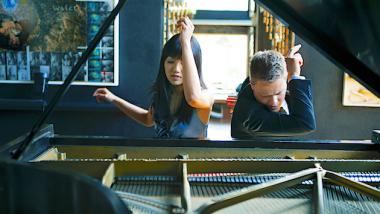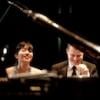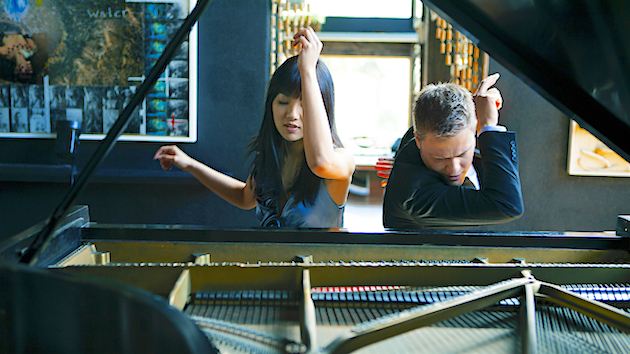
Since their formation in a Juilliard dormitory nearly two decades ago, the inimitable Anderson & Roe Piano Duo has been clearing a path for an extensive melange of repertoire with a flame-thrower. Combined with their MTV-style, action-filled music videos featuring fiery arrangements of both classical repertoire and popular songs from the Beatles to Radiohead, they have long left behind the boundaries of the normal and have carved their own domain.
Their reputation for thrilling live performances along with their immensely approachable demeanor has taken them around the globe. They even hosted the broadcast portion of the Van Cliburn International Piano Competition, giving the audience an entertaining, inside view of the competition, as Roe was a past competitor.
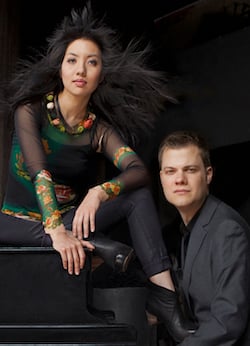
So, it seemed a bit strange that their recent concerts for Chamber Music San Francisco were advertised with a pseudo-disclaimer stating that the duo would only be performing classical music. Was it a snub of the one of the duo’s main ingredients? Or, was it a soothing invitation to a more traditional sector of the audience? With Mozart, Rachmaninoff, and Ravel on the program, the duo had an opportunity to prove that their successful formula is built on a solid foundation of musicianship and not just flash.
The concert opened with a whimsical, rhapsodic assemblage of the Act I Finale of Mozart’s Cosi Fan Tutte. “Si mora, si, si mora” was played decisively, yet the atmosphere remained humorously amorous, even silly. The arrangement itself, done by the duo, was reminiscent of paraphrases and other arrangements by Liszt: There were ornaments and runs spanning the entire piano range that added flair.
After briefly taking the microphone to introduce themselves and the pieces, the duo then moved onto Rachmaninoff’s Fantasie-Tableaux (Suite No. 1, Op. 5), a meaty, extravagant narrative in the truest Romantic tradition. Through the densely written score, the duo brought out the tightly woven harmonies clearly, while cajoling each other, then laughing. Sultry voices echoed in generous resonance — created by the careful use of the sustain pedal — without blurring the seascape that was being evoked.
The reading of “Easter” was particularly remarkable. Depicting raucous church bells that ring and echo across the valley in celebration, the “bells” were alive with swells and ebbs. In contrast to most interpretations that easily fall into monotony and cacophony, Anderson and Roe sculpted a vivid, almost cinematic rendition.
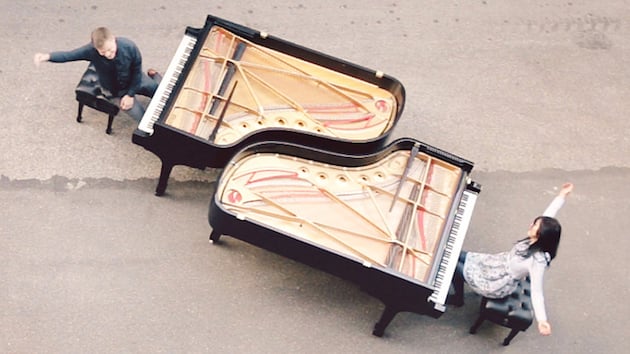
Ravel’s La valse followed, dark and evocative of the horror of the World War I. Although Ravel denied that particular allusion and wrote that he imagined the music for a dance in an imperial court of 1855, the dark, misty opening with dissonant rumbling set the scene. The waltz then evoked nostalgia and the imagery of swirling dancers in an opulently decorated ballroom. In the second half, the atmosphere turned darker and more macabre. As the music ascended to a dizzying height, the dancers were thoroughly inebriated in madness, perhaps oblivious to the suffering outside. Here, the duo became synchronized pyrotechnicians, and their sonic fireworks created what might have been the most expansive crescendo ever heard on two pianos.
The second half of the program consisted of arrangements that the duo wrote for themselves. Astor Piazzolla’s Libertango employed extended techniques such as plucking the strings and using a mute to give the accompaniment a character distinct from the lyrical melodic line. Knowing eye contact between the duo was a theatrical element that added lightness.
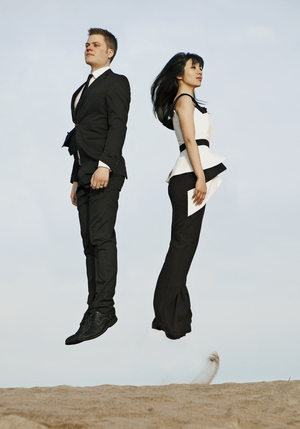
Gluck’s Ballet from Orphée et Eurydice provided a much-needed interlude after the hot-blooded Piazzolla. The duo’s own Carmen Fantasy (or Carmen Thriller as they announced it), was a festive rhapsody of the key scenes from Bizet’s opera condensed into 10 minutes. The arrangement was full of playful embellishments that never obscured the original material. From the capricious Habanera, the duo explored a wide range of emotions with the utmost synchronicity, not just technically but also interpretatively.
In the encores — figuratively and literally — the duo turned up the volume to 11: It was party time. Starting off with a raucous arrangement of “America” from Bernstein’s West Side Story, they gave the audience a total-immersion baptism. The improbable gospel-style arrangement of the Beatles’ “Let It Be” evoked Sunday-morning singers with a Hammond organ wailing away. The somber, wistful arrangement of “What a Wonderful Life” brought the audience back to earth. It was pure poetry.
Listening to Anderson and Roe, with their theatrical flair, it was easy to imagine hearing Franz Liszt take popular songs of the time and turn them into virtuosic masterpieces. It’s a venerable old recipe, but Anderson and Roe elevate it to the next level by executing it on two pianos and four hands, and imbue it all with a sense of occasion, theater, and pyrotechnics. What was certainly a successful approach for Liszt is for Anderson and Roe, too, but with twice the energy and twice the fun.

